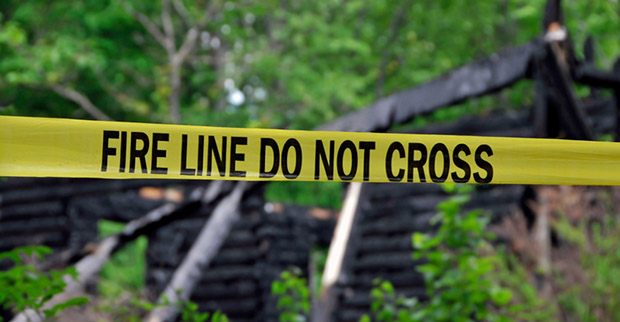
Be safe at work and home with these tips for Fire Prevention Week
Oct. 8 – 14 is Fire Prevention Week: a good time to pass along some tribal fire safety tips as we head into colder temperatures and more dry weather, in the West at least. Sponsored by the National Fire Protection Association (NFPA), this week’s emphasis is on the importance of planning two escape routes for every room.
Fire safety on the job
As a tribal business owner or manager, you’re well aware of the importance of eliminating safety hazards on the job such as clutter that may block aisles or exits and ensuring that fire exits are accessible. It’s a good idea to have any exits other than your main entrance clearly marked as a fire exit, with emergency back-up lighting.
Walk through each area of your company with your team, pointing out fire exits and extinguishers, ensuring that each employee is familiar with every exit. We suggest you have an emergency plan that’s written and communicated with everyone – on a regular basis.
You also know how important smoke and carbon monoxide detectors and fire extinguishers are. Just be sure you check them on a regular basis to ensure good working order. Remember the difference between extinguishers?
- Water extinguishers: use on general fires that involve paper/cardboard, rubbish or furnishings
- Foam extinguishers: use on flammable liquids
- Powder extinguishers: use on electrical equipment and flammable gas or liquid. However, they can affect breathing and visibility, so use carefully indoors
- CO2 extinguishers are the safest for use on electrical equipment because they won’t further damage your electronics
- Wet chemical extinguishers are used on fires involving deep fat fryers
It’s a good idea to always be on the lookout for frayed cords to any electrical equipment, and keep any flammable papers or liquids away from heat-causing equipment such as copiers and other shop machinery.
The National Fire Protection Association offers handbooks and other resources on the fire safety for businesses. If your tribal government offers it, a visit from your fire marshal is a great first step to creating a fire prevention plan.
Related: Fire prevention and safety tips for your tribal business
Fire safety tips at home, for Fire Prevention Week
While only 20 percent of fires happen during sleeping hours, half of home fire deaths occur between 11 p.m. and 7 a.m. We’re all asleep. No one notices the smoke or the fire – until it’s often too late. And with bedrooms on the second floor or children sleeping in another part of the house, pre-planned escape routes become even more critical.
Fire safety tip #1: Take the time to plan two escape routes from every room in your house.
Those routes are fairly obvious: windows and doors. But planning an escape route is only the beginning. According to an NFPA survey, nearly 75 percent of us have an escape plan, but only a third ever practice it. In the same survey, respondents were asked to guess how long they’d have before an in-home fire would become life threatening. Six minutes, they responded. Two minutes is more accurate, says NFPA.
Fire safety tip #2: Practice with all family members 2x annually.
You may want to download NFPA’s escape planning grid to share with tribe members. It shows a sample floorplan with escape exits, and then provides a grid for them to draw their own plan to discuss with family members. They’ve also created a one-page sheet, basic fire escape planning.
Another free tool for use with kids is I know My Fire Safety Plan story. Parents will need to work with children to understand what a hot door means, and how to open windows and remove screens. If bedrooms are on the second floor, they should consider buying rope ladders and then work with family members until they’re clear how to use them. Practice these fire drills at least twice a year, NFPA recommends: once at night and once during the day.
Fire safety tip #3: Ensure all smoke alarms are working properly.
Sixty percent of fire deaths from 2010 – 2014 were caused by fires in homes with no smoke alarms or non-working alarms. When smoke alarms fail to operate, it is usually because batteries are missing, disconnected, or dead. NFPA found that hardwired alarms operated 94% of the time, while battery powered alarms operated 80% of the time. One more tip here: Be sure your smoke alarms are interconnected: When one sounds, they all should sound.
Fire safety tip #4: Close doors behind you.
The simple act of closing a door when you exit the room can slow the spread of smoke, heat and fire, buying others who are trying to escape a little more time.
Fire safety tip #5: Have a designated meet-up spot.
Every time you practice a fire drill, end it at the same spot: A place that you’ve decided to meet up outside, to make sure everyone has escaped safely. It should be a safe distance from your home, and can be a light pole, a tree, your mailbox or your favorite neighbor’s front porch.

What other free tools are available for Fire Prevention Week?
Those NFPA folks have thought of everything: There’s a safety sheet for sleepover fire safety for kids, a special tips sheet for fire safety in manufactured homes and more. All are free, printable downloads for you to pass along. You can view more tools at their website.
